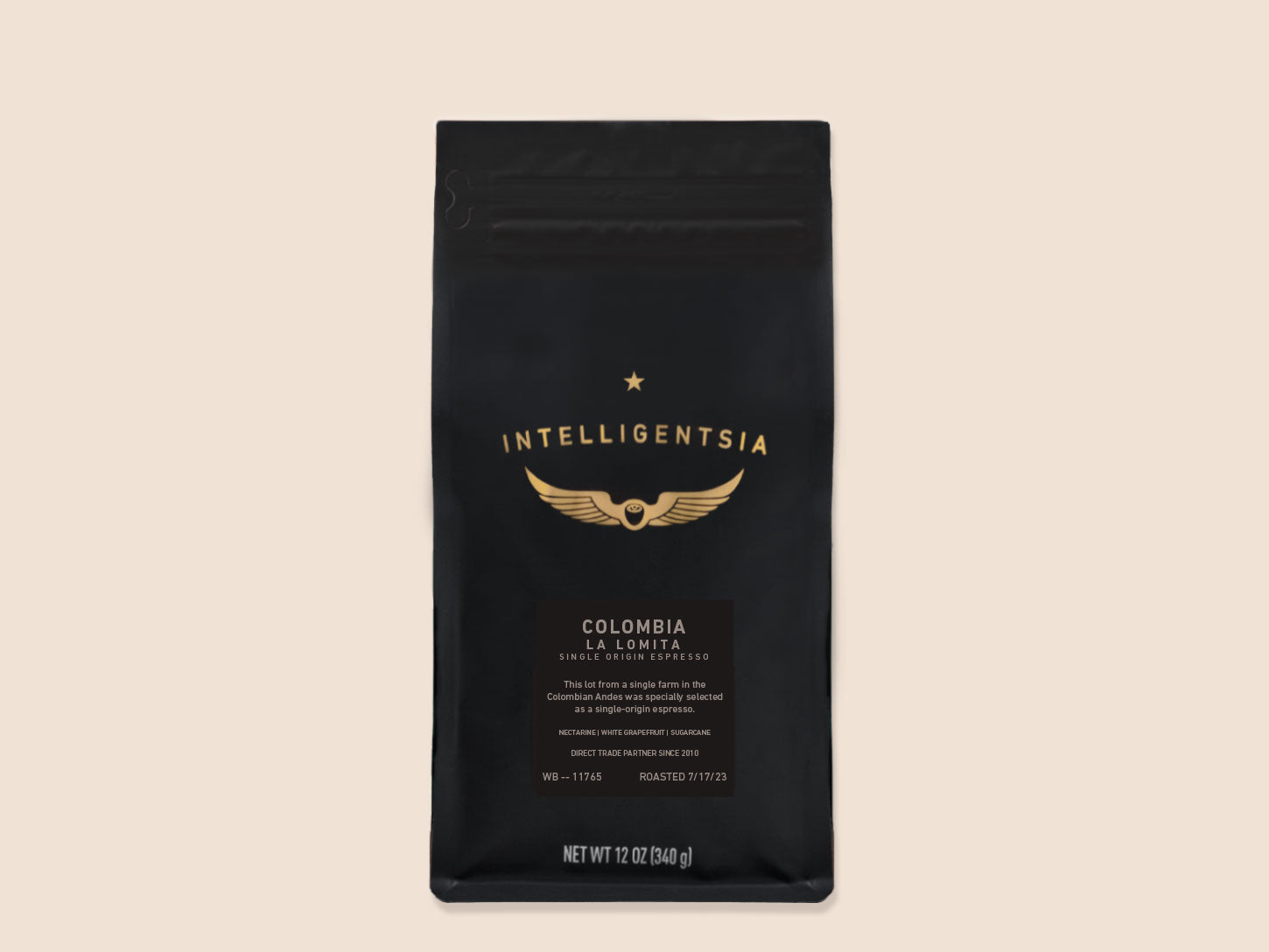Explore the Distinctive Flavor Profile of SOE Single Origin Espresso Today
Explore the Distinctive Flavor Profile of SOE Single Origin Espresso Today
Blog Article
Coffee Beans 101: Everything You Need to Find Out About Coffee and Blended Coffee Beans
When it comes to coffee, comprehending the subtleties of coffee and blended beans can transform your day-to-day cup. From the growing process to toasting methods, every step plays a function in your coffee experience.
Understanding Coffee Beans: Varieties and kinds
When diving into the globe of coffee, understanding the types and selections of coffee beans is necessary for every enthusiast. Arabica beans are understood for their smooth, complex tastes and lower high levels of caffeine content, making them a favored among coffee aficionados.
Ethiopian Yirgacheffe offers brilliant flower notes, while Colombian beans supply a healthy flavor account. By acquainting yourself with these beans and their tastes, you'll elevate your coffee experience and make more enlightened options in your brewing trip.
The Growing Process: From Seed to Bean
When you explore the journey of coffee, it all begins with seed option strategies that establish the foundation for quality. From there, growing and gathering play important duties in ensuring the beans thrive. Lastly, handling approaches transform those collected cherries right into the coffee beans you love.
Seed Option Strategies
Picking the right seeds is essential for creating high-grade coffee beans, as it lays the structure for the whole growing process. Pay interest to the seed's age and storage space conditions, as fresh seeds tend to germinate better. Take into consideration the illness resistance of various selections, as this can greatly affect your return.
Cultivation and Harvesting
As you support your coffee seeds into flourishing plants, comprehending the farming and harvesting process is vital for achieving the best taste and top quality. Start by growing your seeds in well-draining dirt, preferably in a shaded location to safeguard them from straight sunlight. As your plants expand, keep regular dampness, and be mindful of their demand for nutrients. Prune regularly to advertise airflow and healthy and balanced development.
When it comes time to harvest, try to find ripe cherries, which usually transform a lively red. Hand-picking is commonly the most effective method to assure just the ripest cherries are picked. Timing is vital; harvesting prematurely or far too late can influence the taste account of your beans. Welcome patience and care, as this is where high quality begins.

Handling Techniques Explained
As soon as you have actually gathered your coffee cherries, the following necessary step is processing them to change those vivid fruits into the beans you'll make. There are two major methods: the dry procedure and the wet procedure. In the dry procedure, you spread out the cherries out in the sunlight to completely dry, permitting the fruit to ferment and pass on distinct flavors to the beans. On the other hand, the wet process includes getting rid of the fruit promptly and fermenting the beans in water, leading to a cleaner taste. After processing, the beans are hulled, sorted, and typically dried again. Each method affects the flavor account, so try out both can aid you uncover your preferred brew. Comprehending these techniques is crucial to appreciating your coffee experience.
Toasting Techniques: How Taste Is Established
When it pertains to roasting coffee beans, recognizing roast degrees is crucial to revealing their distinct tastes. Each roasting technique impacts the aroma and improves the flavor advancement procedure, giving you a richer coffee experience. Let's explore exactly how these aspects collaborated to raise your daily mixture.
Roast Levels Explained
Roast levels play an essential duty in shaping the flavor profile of your coffee. When you choose a light roast, you'll enjoy brilliant acidity and fruity notes. As you relocate to a medium roast, you'll observe a balance of sweet taste and intricacy, often highlighting delicious chocolate or caramel flavors. Dark roasts, on the other hand, provide strong, great smoky features with much less level of acidity, making them durable and rich. Each degree results from various roasting times and temperatures, impacting the beans' chemical make-up. By understanding these levels, you can better choose a coffee that matches your preference choices. Explore various roasts to uncover which one reverberates with you, improving your overall coffee experience and enjoyment.
Influence On Fragrance
The roast level not only affects the preference of your coffee however likewise greatly affects its fragrance. When you choose a light roast, you'll commonly see intense, SOE flower notes that can make your coffee odor fresh and vivid. As the beans dim, the aroma changes; a medium roast brings out more balanced, caramelized fragrances, while a dark roast tends to include bold, smoky touches. Each toasting method launches different unpredictable compounds, shaping just how your coffee scents. In addition, the freshness of the beans plays a crucial function; freshly baked coffee releases much more aromatic oils, boosting that luring scent. So, take notice of the roast degree-- it's crucial to exposing the full aromatic experience of your mixture.
Taste Growth Refine
As you explore the taste growth procedure, you'll find that toasting techniques play an essential role in forming the preference profile of your coffee. The roasting temperature and time straight affect the acidity, sweet taste, and bitterness of the beans. Light roasts retain more of the bean's original flavors, highlighting fruity and flower notes. Medium roasts equilibrium acidity and body, using an all-around flavor. Dark roasts, on the other hand, highlight vibrant, smoky characteristics while lessening the bean's integral top qualities. During toasting, chain reactions, like the Maillard reaction and caramelization, transform the beans and improve their intricacy. Try out different roasting degrees can assist you discover your excellent brew, so don't think twice to taste and discover the abundant spectrum of flavors!
Coffee vs. Blended Coffee: Key Differences
Coffee and combined coffee each offer unique experiences that satisfy different preferences and preferences. Coffee is a concentrated coffee made by forcing warm water via finely-ground coffee beans, resulting in a rich, vibrant flavor and a creamy layer of crema on top. It's frequently taken pleasure in as a shot or utilized as a base for drinks like coffees and cappucinos.
On the other hand, blended coffee incorporates different beans from different regions, producing an extra well balanced taste account. You'll usually locate blends that highlight sweetness, body, or acidity, making them flexible for various brewing approaches. While coffee concentrates on strength, mixed coffee may supply a more comprehensive variety of tastes that can transform with each sip.
Inevitably, your selection in between coffee and combined coffee come down to your personal choice. Whether you long for a leisurely cup or a quick jolt, both options have something delicious to supply.

Developing Approaches: Opening the Perfect Cup
When it pertains to developing coffee, discovering the right approach can change your experience and raise your cup. Each developing method has its distinct charm and can considerably impact your coffee's flavor and scent. Using a French press permits you to appreciate a abundant and robust mixture, while a pour-over method supplies a clean, brilliant cup with unique tastes.
If you choose coffee, buying a top quality device can help you understand the art of pulling shots. Alternatively, for ease, a single-serve pod system provides rate without sacrificing preference.
Don't neglect about chilly mixture, which delivers a smooth, much less acidic coffee ideal for hot days. Experiment with various methods to uncover what reverberates with your taste.
Sampling Notes: Identifying Taste Profiles
Just how can you truly value your coffee if you do not recognize what tastes to look for? Tasting notes are your guide to comprehending the complicated globe of coffee. Some coffees might leave a chocolatey or sugar aftertaste, while others may have a brilliant, tidy surface.
Take into consideration the body of the coffee, also; is it light and airy or thick and syrupy? Do not forget acidity; a brilliant level of acidity can add life, while a low acidity could offer a smoother experience. By identifying these flavor profiles, you'll grow your link with each mug, making coffee sampling a fascinating trip of exploration.

Tips for Picking and Storing Coffee Beans
Saving and choosing coffee beans appropriately can greatly improve your developing experience. Beginning by selecting high-quality beans that match your taste - SOE.
Once you have your beans, save them in an impermeable container to avoid exposure to air, wetness, and light. A dark, great place works best, so stay clear of maintaining them in the fridge or fridge freezer, as this can present wetness. Just grind the quantity you require to preserve freshness; entire beans keep taste longer than pre-ground coffee.
Last but not least, attempt to utilize your beans within 2 to 4 weeks after opening up for peak taste. Adhering to these pointers will certainly ensure your coffee stays flavorful and enjoyable, boosting your everyday brew to new heights.
Frequently Asked Concerns
For How Long Do Coffee Beans Remain Fresh After Toasting?
Coffee beans stay fresh for about 2 weeks after toasting - SOE. You should store them in an airtight container, far from light and moisture. After that, their flavor and scent begin to decrease considerably

Can I Mix Different Coffee Bean Varieties?
Absolutely, you can blend different coffee bean selections! Try out blends can boost tastes and produce a distinct preference account. Just make sure to stabilize the strengths and attributes of each selection for the finest outcomes.
What Is the Perfect Work Dimension for Coffee?
For coffee, you'll desire a great work dimension, concerning the appearance of common salt. This permits optimal removal, causing a rich, flavorful shot. Experiment a little bit to discover what matches your taste best!
How Does Altitude Affect Coffee Bean Flavor?
Elevation affects coffee bean flavor by influencing the development price and chemical make-up. Higher elevations result in slower maturation, which enhances level of acidity and complexity, offering your coffee a special and vibrant taste you will not forget.
Exist Decaffeinated Versions of Coffee Beans?
Yes, there are decaffeinated versions of coffee beans. You can take pleasure in a rich coffee flavor without the caffeine kick. Just try to find "decaf" blends at your local coffeehouse or specialized store.
Coffee Beans 101: Every Little Thing You Required to Know Concerning Coffee and Blended Coffee Beans.
When diving right into the globe of coffee, comprehending the kinds and selections of coffee beans is crucial for every enthusiast.When it comes to toasting coffee beans, comprehending roast degrees is key to exposing their special tastes. Espresso is a focused coffee made by requiring warm water with finely-ground coffee beans, resulting in an abundant, vibrant flavor and a velvety layer of crema on top.On the various other hand, combined coffee combines various beans from various areas, producing a more well balanced taste account.
Report this page